Философские идеи Людвига Витгенштейна - [60]
Приложение II. SOME ABSTRACTS of INTERNATIONAL CONGRESSES on WITTGENSTEIN's STUDIES
M.S. Kozlova. Methods of language analysis in the late Wittgenstein's concept[196]
1. Among the concepts of logical analysis of knowledge/language - those which belong to the XXth century, but haven't yet received adequate understanding and judgement - there are some ideas of the late Wittgenstein. Wittgenstein's philosophic investigations are united by one important topic: correlation between verbalism and reality. The main impulse of all his speculations is a clear vision of reality through the linguistic means of its refiexion. "The notion of clear representation is of fundamental importance to us. It determines the form of contemplation, the way we approach things"[197] . A large amount of data and facts is analyzed to demonstrate that adequate view of reality - both in science and in everyday life - is difficult to achieve. The movement to it is hindered by a lot of obstacles of conctptual and linguistic character. The lack of adequacy in understanding language forms, like distorting spectacles, causes the erroneous vision of reality. The verbal pictures created by us are often represented as a piece of reality, so that we become their captives[198] . The ability of articulate perception, of correlating verbalism and reality presupposes certain training, certain habits and skills. For the solution of this problem, a special technique, special practice of speech cklarification or analysis was elaborated by Wittgenstein. It was stressed that the research in question has a logical-grammatical character and that the problems to be solved deal with the logic of using concepts (the logic of conceptual behaviour)[199] . We are going to offer a concise description of the peculiarities present in the late Wittgenstein's analytical concept (or even in his practice) which are so elusive, so difficult to grasp; in so doing, we shall try bring to light - to the best of our ability - all his worthwhile creative findings, at the same time, to reveal the causes of the absurdities and misrepresentations, so frequent in the attempts to interpret them.
2. The method of clarification introduced by Wittgenstein carries the conceptual charge characteristic of natural languages. It is an entirety of partical methods which criss-cross, get transformed one into another, reveal new aspects when approached from new positions. They resist any attempts to introduce delimitations or strict order into their realm, to systematize them. L.Wittgenstein was himself aware of the difficulty and confessed that his own attempts to systematize his remarks turned to be a failure[200] . Yet, within the totality of the analytic procedures suggested by him, one can discern those of a wider scope and of a more generalized meaning. The most significant among them is the "language-game" idea/method. This is a special way of experimenting with language mentally which makes it possible to distinguish within the language - or construct artificially - all kinds of the simplest (or of more sophisticated) models of speech behaviour, which enables us to vary linguistic rules, emphasizing any, interesting to the researcher, aspect of it - in order to get a deaper insight into its nature. Such conventional "games" have referential, rather than direct, cognitive significance; their nature is auxiliary, clarifying, methodological. This method is intended to bring language into action, to turn this static entity into a constant dynamic address to the speech practice, to its usage in different contexts, in varying situations. It is aimed at revealing, through its activity, of the aspects concealed by static language. In this way, differentiation of various kinds of linguistic instruments, as well as numerous types of usings, of different communicative functions performed by them is brought about. This analytic idea is likely to find wide application not only in linguistics, but also in pedagogic practice; it can also be successful in supplementing the already existing logical devices of making language more precise (the latter seems to be especially important for humanities and humanitarian practice with their linguistic means - both rich and ambivalent as far as their spectre of meanings is concerned).
3. The procedure of language games encompasses the whole scope of methods. Among them, is the method of simplifying the language which is followed by gradual complication of it; the method of artificial distinctions; the method of bringing into action of the static conceptual speech apparatus; of varying the contexts of usage; of "deciphering" abstractions (conventional restoration of the initial word-usage), etc. The "family resemblances" method can be mentioned as an example of a relatively autonomous analytic device broadly used in Wittgenstein's works to shake the rigid notions concerning the relation between general notions and reality. Thus, while analyzing the problem of consciousness, he demonstrates how often corresponding words (meaning, thinking, understanding, ets.) generate the idea of their correspondence to some clearly outlined and homogeneous realities, However, as follows from his analysis, there exist innumerable variations of phenomena covered by a single expression, despite the fact that often "there is no one class of features characteristic of all cases"
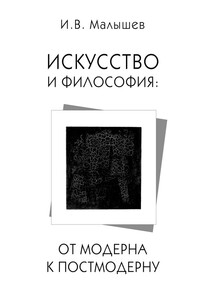
Сборник статей доктора философских наук, профессора Российской академии музыки им. Гнесиных посвящен различным аспектам одной темы: взаимосвязанному движению искусства и философии от модерна к постмодерну.Издание адресуется как специалистам в области эстетики, философии и культурологи, так и широкому кругу читателей.
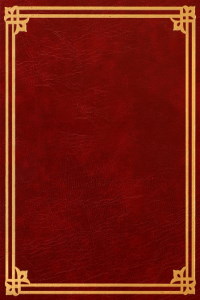
Санкт-Петербург - город апостола, город царя, столица империи, колыбель революции... Неколебимо возвысившийся каменный город, но его камни лежат на зыбкой, болотной земле, под которой бездна. Множество теней блуждает по отражённому в вечности Парадизу; без счёта ушедших душ ищут на его камнях свои следы; голоса избранных до сих пор пробиваются и звучат сквозь время. Город, скроенный из фантастических имён и эпох, античных вилл и рассыпающихся трущоб, классической роскоши и постапокалиптических видений.
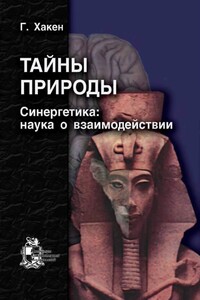
Книга представляет собой перевод на русский язык знаменитой «Тайны природы» Германа Хакена. Ее первейшая цель — донести до читателя идеи синергетики, позволяющие познать удивительные, необычайно разнообразные, организованные структуры, созданные самой природой. Для самого широкого круга читателей.
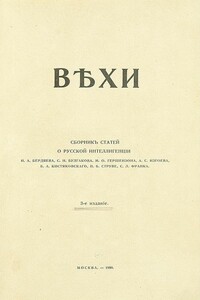
ВЕХИ. Сборник статей русских философов начала XX века о русской интеллигенции и её роли в истории России. Издан в марте 1909 г. в Москве. Получив широкий общественный резонанс, к апрелю 1910 г. выдержал четыре переиздания общим тиражом 16000 экземпляров. Михаил Осипович Гершензон. ПРЕДИСЛОВИЕ Николай Александрович Бердяев. ФИЛОСОФСКАЯ ИСТИНА И ИНТЕЛЛИГЕНТСКАЯ ПРАВДА Сергей Николаевич Булгаков. ГЕРОИЗМ И ПОДВИЖНИЧЕСТВО Михаил Осипович Гершензон. ТВОРЧЕСКОЕ САМОСОЗНАНИЕ Богдан Александрович Кистяковский.

Первое издание на русском языке в своей области. Сегодня термин «вождь» почти повсеместно употребляется в негативном контексте из-за драматических событий европейской истории. Однако даже многие профессиональные философы, психологи и историки не знают, что в Германии на рубеже XIX и XX веков возникла и сформировалась целая самостоятельная академическая дисциплина — «вож-деведенне», явившаяся результатом сложного эволюционного синтеза таких наук, как педагогика, социология, психология, антропология, этнология, психоанализ, военная психология, физиология, неврология. По каким именно физическим кондициям следует распознавать вождя? Как правильно выстроить иерархию психологического общения с начальниками и подчиненными? Как достичь максимальной консолидации национального духа? Как поднять уровень эффективности управления сложной административно¬политической системой? Как из трусливого и недисциплинированного сборища новобранцев создать совершенную, боеспособную армию нового типа? На все эти вопросы и множество иных, близких по смыслу, дает ясные и предельно четкие ответы такая наука, как вождеведение, существование которой тщательно скрывалось поколениями кабинетных профессоров марксизма- ленинизма. В сборник «Философия вождизма» включены лучшие хрестоматийные тексты, максимально отражающие суть проблемы, а само издание снабжено большим теоретическим предисловием В.Б.
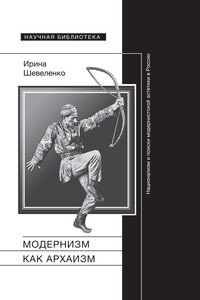
Книга посвящена интерпретации взаимодействия эстетических поисков русского модернизма и нациестроительных идей и интересов, складывающихся в образованном сообществе в поздний имперский период. Она охватывает время от формирования группы «Мир искусства» (1898) до периода Первой мировой войны и включает в свой анализ сферы изобразительного искусства, литературы, музыки и театра. Основным объектом интерпретации в книге является метадискурс русского модернизма – критика, эссеистика и программные декларации, в которых происходило формирование представления о «национальном» в сфере эстетической.